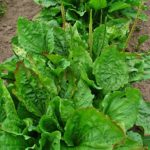
Eyebright: at risk.
This paper was a result of my work in HRB 622. But I think it reinforces and demonstrates the learning I acquired in HRB605. I feel that this paper indicates one method of how to apply traditional knowledge and evidence based data by assessing a variety of plant classification systems, including phytochemistry, botanical, cultural and bioregional, to improve human health. The comparison of constituents found in eyebright and plantain provides a convincing case for how phytochemistry and evidence based data can inform and build on the traditional body of knowledge that comprises western herbalism.
Eyebright and the Ethics of Wildcrafting.

The Noble Plantain
Wildcrafting is an important component of traditional herbal medicine. Many herbalists would argue that wildcrafting and encountering species in their native habitats is a necessary component in developing a competent and meaningful relationship with with those plants. There is also an argument that as a result of complex mechanisms such as hormesis cultivated plant specimens have the potential of containing a subtly different, and often weaker, constituent profile. Other herbalists will argue that these differences between wild and cultivated plants are negligible in a therapeutic context and the solution to over-harvesting of wild therapeutics is to use only cultivated varieties.
The problem with this solution is that there are many plants with valuable therapeutic properties that prove difficult to cultivate despite increasingly sophisticated cultivation techniques. Many of these therapeutic plants which prefer to grow wild are at-risk. It is the responsibility of an ethical herbalist to appraise themselves of this situation and take responsible steps to protect these species from further depletion.
The responsibility to be an ethical wildcrafter has many facets. According to the wildcrafting guidelines published by United Plant Savers this starts with correct botanical identification. Other facets include harvesting plants from areas that have not been contaminated, complying with property rights and local laws, avoiding waste, harvesting in the correct season, and replanting in the areas harvested (United Plant Savers, 2006).
Herbalists must work to protect the habitats they rely on. With common and readily available plants, this means taking no more than 10% of the aerial parts of a specific plant and no more than 10% of a plant from a specific area. Wildcrafters should avoid harvesting lone specimens and sparsely populated species. At-risk species should not be harvested at all (United Plant Savers, 2006) . Herbalists must also research the sources of herbs they purchase commercially. There is arguably no functional difference between wild-harvesting an at-risk species and purchasing the same species from a vendor who wild harvested it. Herbalists need to advocate for conservation of these species in the herbal community. Finally and most importantly, an ethical herbalists should always examine if there are abundant alternative therapeutic species with similar indications as at-risk species.
Euphrasia spp. (E. Officinalis L.) eyebright, is an example of an at-risk therapeutic plant. Eyebright is a semi-parasitic plant that depends on nutrients it receives as a result of intermingling it’s roots with neighboring grasses. It’s native habitat of meadows and grasslands has undergone constant reductions in size as a result of human development.
Eyebright has historically been used for it’s anti-inflammatory properties and as a gentle astringent. It is especially effective for reducing inflammation of the eye and eyelid and on the mucus membranes in general. It is historically a specific remedy for conjunctivitis and this usage is corroborated by modern research (Stoss, Michels, Peter, Beutke & Gorter, 2000). Eyebright is also anticatarrhal and frequently indicated for sinusitis (Hoffman, 2003, P 550) and hay fever (Meserole & Yarnell, 2009). Eyebright contains the iridoid glycoside aucubin, various tannins caffeic and phenolic acids and flavonoids (Hoffman, 2003).
When looking for effective alternatives to eyebright it is important to look both for common therapeutic plants with the same indications as well as plants with the same constituent profile.
One species, Plantago major (plantain) also has aucubin and tannins in addition it has mucilage scutellarin and leteolin all of which are anti-inflammatory. While plantain has traditionally been used as a vulnerary, it also has a long history of use as an anti inflammatory. Grive mentions earlier material medicas indicating it as a “distiller of rheum upon the throat, glands, lungs etc, and cooler of inflammation of the eyes” (Grieve, 1971). Plantain is far from endangered, it has spread and thrived everywhere that experienced European colonization.
The dosages and forms of administration for plantain and eyebright are similar as well. While plantain is well suited to oil extractions, it can also be used as an infusion or poultice or tincture. Plantain can also be used as a poultice or compress.
In conclusion, while wildcrafting is a central component of modern western herbalism, it needs to be conducted in an ethical manner that respects the herbalist’s important role in conserving threatened species. Because of the rich abundance of different species and the fact that many plants share similar metabolites it is important to look for common alternatives to threatened species when possible. In many scenarios the at-risk species may be a specific remedy for a condition. While that alternative plant may not be an exact match, it is likely that from a therapeutic context, the common plant may prove as effacious as the threatened one.
References:
Grieve, M. (1971). A modern herbal; the medicinal, culinary, cosmetic and economic properties, cultivation and folk-lore of herbs, grasses, fungi, shrubs, & trees with all their modern scientific uses (Vol. 2). New York: Dover Publications.
Hoffmann, D. (2003). Medical herbalism: The science and practice of herbal medicine. Rochester, VT: Healing Arts Press.
Lisa Meserole and Eric Yarnell. Botanical Prevention and Treatment for Hay Fever. Alternative and Complementary Therapies. February 2009, 2(2): 83-86. doi:10.1089/act.1996.2.83.
Stoss, M., Michels, C., Peter, E., Beutke, R., and Gorter, R. W. Prospective cohort trial of Euphrasia single-dose eye drops in conjunctivitis. J Altern.Complement Med 2000;6(6):499-508
United Plant Savers. (2006). United Plant Savers Planting the Future An Education Guide. Retrieved April 11, 2016, from https://www.unitedplantsavers.org/images/pdf/ups_education_guide_text.pdf